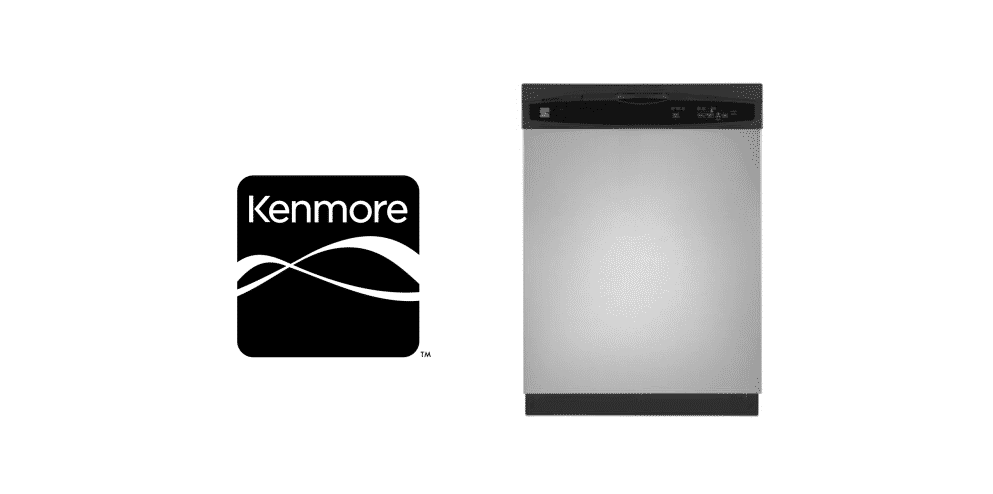
Kenmore was initially founded over a 100 years ago, all the way back in 1913. The brand has always had the same main focus when it comes to their products, and this refers to things meant for use in the home. This includes appliances, technology of various kinds, and so much more of the sort. This variety of theirs includes items to be used anywhere in a home, include those meant for use in bedrooms, living rooms, dining rooms, and of course even kitchens. The product we’ll be delving into detail about today is none other than the dishwashers offered by the company.
These dishwashers are all modern and up to today’s standards depending on the specific version in question. They provide ideal usage at times and their many features make up for the occasional issues that users might encounter every now and then. One example of issues like these which can be rather annoying at times is related to drainage, which is when the Kenmore dishwasher is not draining. This problem is not uncommon and there’s nothing to worry about if you’re encountering it. Here are the best ways to get rid of these drainage issues.
How to Fix Kenmore Dishwasher Not Draining Issue?
- Check the Filter
The first and perhaps the most important thing to do when you’re trying to fix drainage problems with any dishwasher is checking its filter. This is a very simple part of all these appliances that makes it so food can’t go down the drain and cause clogs. However, sometimes the filter itself is the one that can cause problems. The component itself isn’t the one to blame in this scenario, but rather the food which can get stuck around it while cleaning. Sometimes the little food debris can build up directly around or under the filter.
Once built up enough, these pieces of food around the filter can prevent water from flowing through. This is something that can easily be fixed with the help of a few tools in any case. Simply use the tools to open up the filter and inspect it for any kind of blockages causing issues. Use the required things to get rid of said clogs and then reinstall the filter immediately after. Wait for a while before turning on the appliance again and then try to start the draining process. If there aren’t any additional issues, this should have done the trick.
- Inspect the Air Gap
The air gap is a very small gap that plays a huge part in safety. It makes sure that there’s no contaminated water being collected inside of the appliance and that all of its drainage processes are going smoothly. However, when the air gap itself is blocked up by food, there’s not much that the dishwasher will be able to do when it comes to draining all the water collected up. This means that taking care of this issue with the specific component is the next recommended step.
The air gap is the small, protected pipe-like structure right next to the faucet on the dishwasher. Open up the protection ring and take a peek inside while shining some light through the air gap. This should be more than enough to identify any clogs. If you can see something that might be blocking the component from working properly, try to locate the user manual that came along with the dishwasher. Use the steps mentioned there to take care of this specific problem for your specific dishwasher model.
- Clean the Drain Hose
The next step to take if the previous one didn’t work is cleaning the drain hose. This is the component that comes after the air gap and filter in the whole draining process. It collects all the water and is connected with the piping system of your home, sending all the extra, dirty water to the sewage. If this gets clogged up, water will collect inside of it until there’s no more room for the water to go anywhere. At this point, your dishwasher will stop draining water and you’ll have to do something about it quick before trying to use the appliance again.
This isn’t as easy to deal with as the couple of components which were previously listed. That’s because the drain hose is usually located right at the end, at the very bottom of the appliance. Getting to it and properly inspecting it requires precision and patience, and something going wrong can open up the door to a lot more problems rather than fixing them. Make sure to do this very carefully or get someone else to do it for you instead if that works better.
- Replace the Drain Impeller
If there’s nothing clogged up inside of the drain hose and there aren’t any twists or other things of the sort to fix, it could be that the drain hose isn’t to blame either. However, in most cases, this usually means that the drain impeller could be the one to point fingers at instead. This component is the one responsible for shoving water down the drain and ensuring proper drainage at every point. Most problems of these kinds are likely a result of it being broken.
There’s not much to do if this component is actually broken. There’s no solution for it since it can’t be repaired properly and if you try to repair it, it will become problematic only a while after anyway. That means that there’s nothing to do other than replacing the drain impeller with a new one. This should be easy enough to do once you have the right replacement, and these can be found rather easily online so there’s nothing to worry about.
- Contact Support
If none of the previously listed solutions have worked, contact Kenmore’s support immediately and ask them to help with your dishwasher’s drainage system. They’ll ask some questions regarding the situation at hand and provide a suitable solution accordingly.